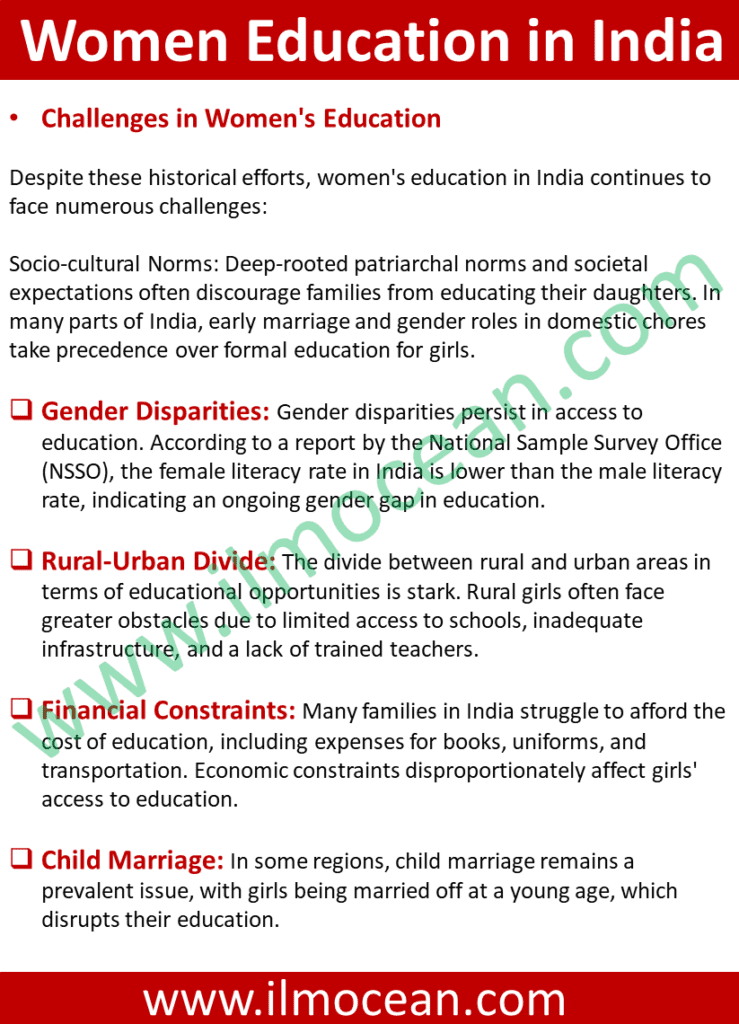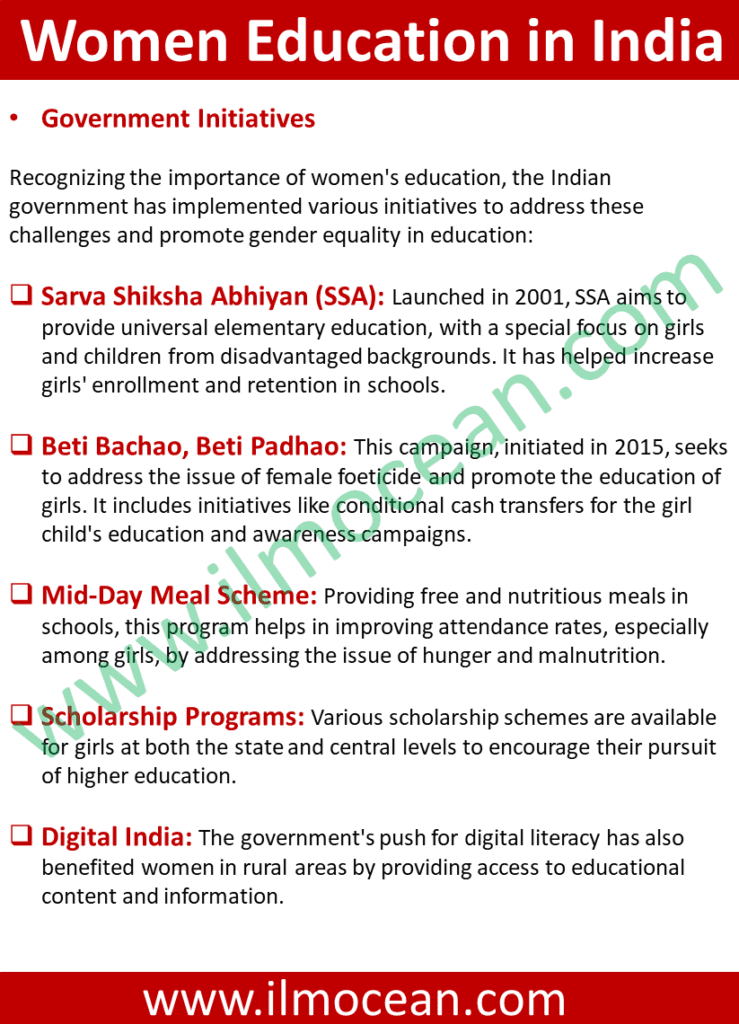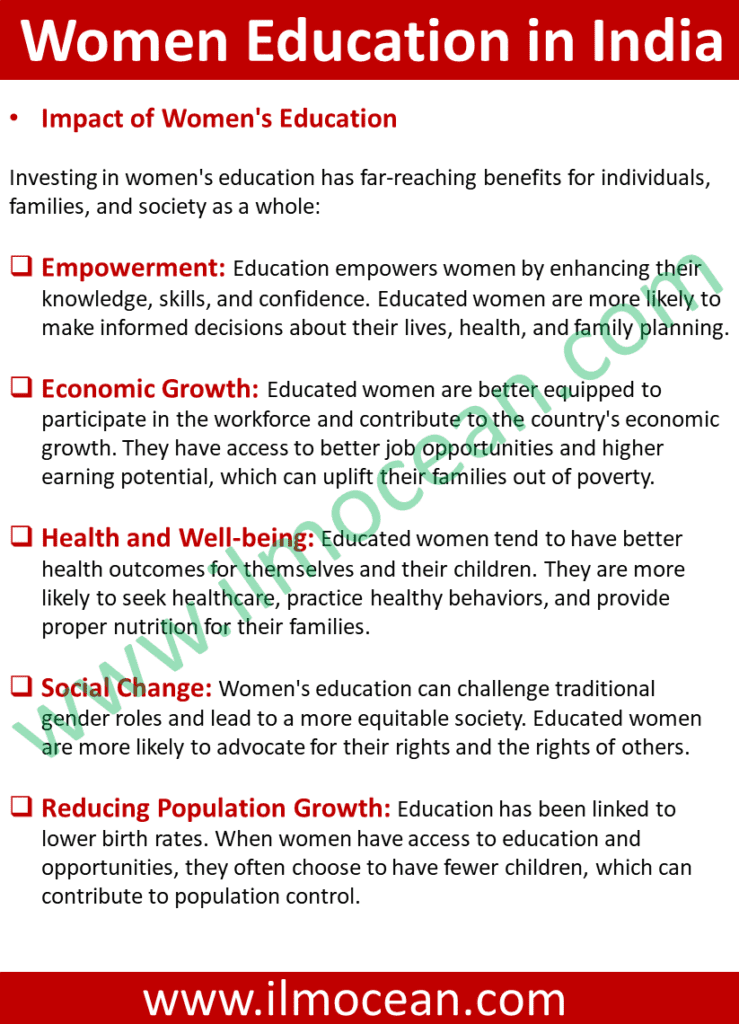In the intricate tapestry of human progress, the empowerment of women through education stands as a luminous thread, weaving its way through the annals of history. India, a land of vibrant diversity and enduring traditions, has witnessed a dynamic shift in the narrative of women’s education. This transformation, while marked by formidable challenges, is a testament to the resilience of a society aspiring for gender parity in knowledge acquisition. The story of women education in India is a nuanced tale of struggle and triumph, an odyssey that transcends centuries of ingrained societal norms.
Note: You can Download FREE PDF at bottom of page
Rooted in an antiquated era where women were confined to domestic roles, the historical context of women’s education in India is punctuated by pioneering individuals who defied convention. The 19th century heralded a renaissance, driven by luminaries like Raja Ram Mohan Roy, Ishwar Chandra Vidyasagar, and Savitribai Phule, who sowed the seeds of change. However, challenges persist, ranging from deep-seated cultural norms and gender disparities to economic constraints and the specter of child marriage. Yet, amidst these obstacles, there is a palpable sense of progress, bolstered by government initiatives and a growing awareness of the transformative potential of educating women. In this essay, we delve into the multifaceted journey of women’s education in India, illuminating its historical trajectory, confronting contemporary challenges, and envisioning a future where the enlightenment of women is not just a distant dream but a tangible reality. Download PDF at the bottom.
- Introduction:
Education is a powerful tool that has the potential to transform individuals and societies. In India, where diversity thrives and traditions run deep, the role of education in empowering women has gained significant attention over the years. While India has made substantial progress in various fields, including technology and industry, it still faces challenges in ensuring that women have equal access to education. This essay explores the status of women’s education in India, its historical context, challenges, government initiatives, and the potential impact of educating women in the country.
- Historical Context
The history of women’s education in India is marked by both progress and setbacks. Traditionally, women in India were often denied access to formal education. The prevailing patriarchal norms and societal customs relegated women to household roles, limiting their opportunities for education and personal development. However, there have been notable exceptions throughout history, with women like Rani Lakshmibai, Savitribai Phule, and many others who defied societal norms to promote women’s education.
The 19th century witnessed significant efforts towards women’s education in India. Prominent figures like Raja Ram Mohan Roy and Ishwar Chandra Vidyasagar advocated for women’s education and played a crucial role in establishing schools and colleges for girls. Savitribai Phule, along with her husband Jyotirao Phule, opened the first school for girls in Pune in 1848, breaking new ground in the fight for women’s education.
-
Challenges Faced in Advancing Women Education in India
Despite these historical efforts, women’s education in India continues to face numerous challenges:
- Socio-cultural Norms: Deep-rooted patriarchal norms and societal expectations often discourage families from educating their daughters. In many parts of India, early marriage and gender roles in domestic chores take precedence over formal education for girls.
- Gender Disparities: Gender disparities persist in access to education. According to a report by the National Sample Survey Office (NSSO), the female literacy rate in India is lower than the male literacy rate, indicating an ongoing gender gap in education.
- Rural-Urban Divide: The divide between rural and urban areas in terms of educational opportunities is stark. Rural girls often face greater obstacles due to limited access to schools, inadequate infrastructure, and a lack of trained teachers.
- Financial Constraints: Many families in India struggle to afford the cost of education, including expenses for books, uniforms, and transportation. Economic constraints disproportionately affect girls’ access to education.
- Child Marriage: In some regions, child marriage remains a prevalent issue, with girls being married off at a young age, which disrupts their education.
- Government Initiatives
Recognizing the importance of women’s education, the Indian government has implemented various initiatives to address these challenges and promote gender equality in education:
- Sarva Shiksha Abhiyan (SSA): Launched in 2001, SSA aims to provide universal elementary education, with a special focus on girls and children from disadvantaged backgrounds. It has helped increase girls’ enrollment and retention in schools.
- Beti Bachao, Beti Padhao: This campaign, initiated in 2015, seeks to address the issue of female foeticide and promote the education of girls. It includes initiatives like conditional cash transfers for the girl child’s education and awareness campaigns.
- Mid-Day Meal Scheme: Providing free and nutritious meals in schools, this program helps in improving attendance rates, especially among girls, by addressing the issue of hunger and malnutrition.
- Scholarship Programs: Various scholarship schemes are available for girls at both the state and central levels to encourage their pursuit of higher education.
- Digital India: The government’s push for digital literacy has also benefited women in rural areas by providing access to educational content and information.
-
Impact of Women Education in India
Investing in women’s education has far-reaching benefits for individuals, families, and society as a whole:
- Empowerment: Education empowers women by enhancing their knowledge, skills, and confidence. Educated women are more likely to make informed decisions about their lives, health, and family planning.
- Economic Growth: Educated women are better equipped to participate in the workforce and contribute to the country’s economic growth. They have access to better job opportunities and higher earning potential, which can uplift their families out of poverty.
- Health and Well-being: Educated women tend to have better health outcomes for themselves and their children. They are more likely to seek healthcare, practice healthy behaviors, and provide proper nutrition for their families.
- Social Change: Women’s education can challenge traditional gender roles and lead to a more equitable society. Educated women are more likely to advocate for their rights and the rights of others.
- Reducing Population Growth: Education has been linked to lower birth rates. When women have access to education and opportunities, they often choose to have fewer children, which can contribute to population control.
- Community Development: Educated women play a vital role in community development and social change. They are more likely to get involved in local governance and work towards improving their communities.
Conclusion
The importance of women’s education in India cannot be overstated. While the country has made progress in recent years, there is still much work to be done to ensure equal access to education for girls and women across all socio-economic strata. The government, civil society, and individuals must continue to collaborate to break down the barriers that hinder women’s education. Empowering women through education not only benefits them personally but also has a transformative impact on society, leading to greater gender equality, economic growth, and social progress. It is imperative that India continues to invest in the education of its women to unlock their full potential and secure a brighter future for all.
You may also like







